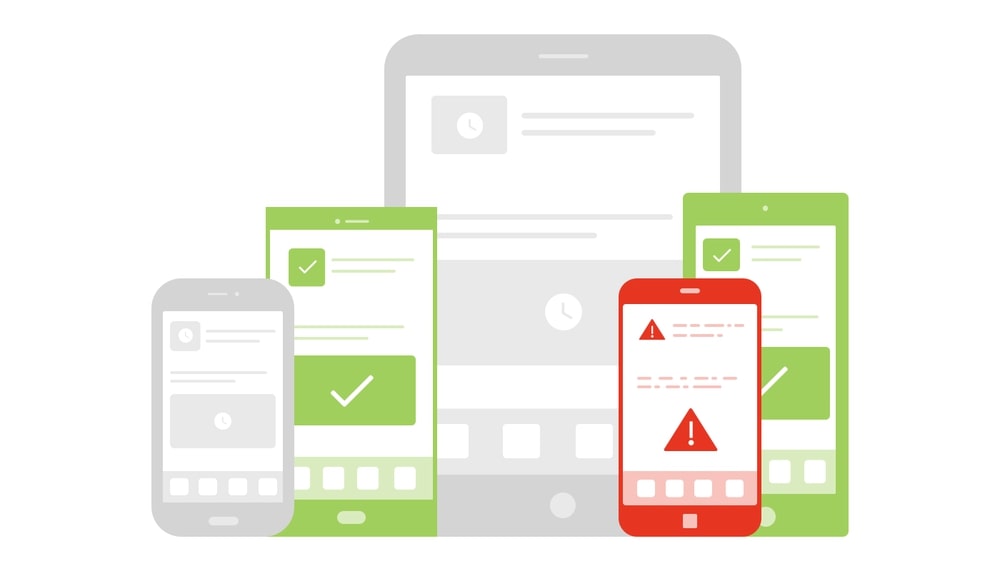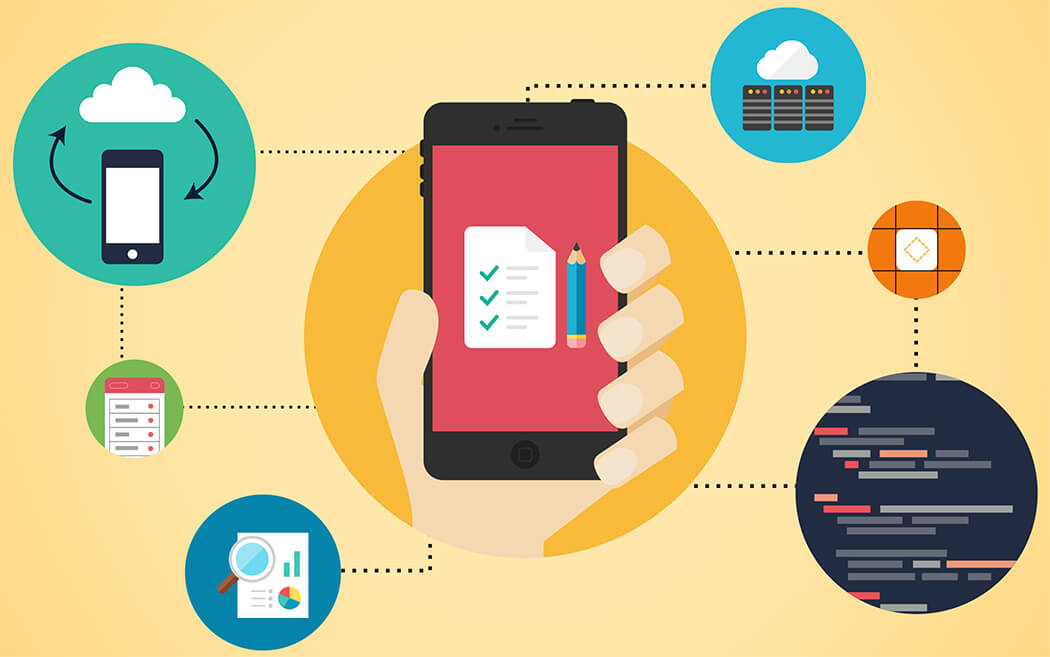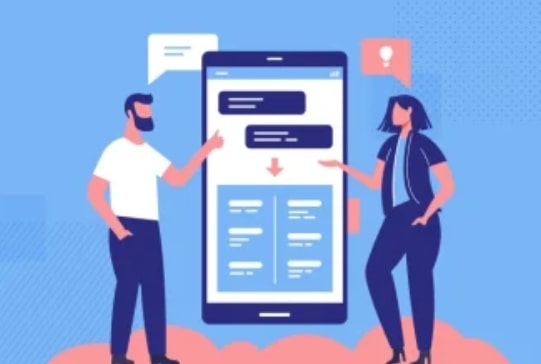Mobile App VAPT Services Company
Mobile App Security Testing
Today's internet traffic is advancing from desktop browsers to mobile browsers, due to the surge in usage of mobile apps. Unfortunately, mobile applications are not safe, in fact they introduce serious cyber security threats for the "data in transit" and the "data at rest". When your services are accessed over the internet by the customer to through an app, it is imperative to ensure security at both ends. If there are security holes in the servers that store and process customer data, developing a highly secure mobile app is meaningless; conversely, an insecure app could allow customer data to be retrieved or redirected to a remote attacker, even if your servers are highly secure.
What Happens When a Mobile App Gets Hacked?
When a mobile app gets hacked, it can have significant repercussions for both users and the app's owner. Here's a detailed overview of what typically happens in such scenarios:
1. Data Breach:
One of the most immediate consequences of a mobile app hack is a potential data breach. Hackers may gain unauthorized access to sensitive user information stored within the app, such as login credentials, personal details, financial data, or other confidential information.

2. Compromised User Privacy:
The breach of user data compromises the privacy of app users. Personal information may be exposed to malicious actors, leading to identity theft, fraud, or other forms of cybercrime. This breach of trust can have long-lasting consequences for both users and the app's reputation.
3. Financial Losses:
In addition to the direct impact on users, a hacked mobile app can result in financial losses for the app's owner. This could include legal fees, regulatory fines (if the app is found to be non-compliant with data protection regulations), loss of revenue due to reputational damage, and costs associated with fixing security vulnerabilities.
4. Damage to Reputation:
A security breach can tarnish the reputation of the app and its developers. Users may lose confidence in the app's security measures and choose to uninstall or stop using it altogether. Negative publicity surrounding a security incident can also deter potential users from downloading the app in the future.
5. Disruption of Service:
Depending on the nature and severity of the hack, the functionality of the app may be compromised, leading to disruptions in service. This can inconvenience users and result in a loss of productivity or revenue for businesses relying on the app for their operations.
6. Legal and Regulatory Consequences:
A mobile app hack may trigger legal and regulatory consequences, especially if the breach involves the compromise of sensitive or personally identifiable information. App owners may be subject to lawsuits from affected users, as well as investigations by regulatory authorities tasked with enforcing data protection laws.
7. Mitigation Efforts:
Following a security breach, the app's owner must take immediate action to mitigate the damage and prevent future incidents. This may involve patching security vulnerabilities, implementing stronger authentication mechanisms, enhancing data encryption, and improving overall security measures.
In summary, when a mobile app gets hacked, it can have far-reaching consequences for users, businesses, and app developers alike. From data breaches and financial losses to damage to reputation and legal repercussions, the impact of a security incident underscores the importance of robust security measures and proactive risk management in the mobile app development process. The unfortunate truth is Mobile Apps: Owner’s Pride, Hacker’s Gain.
How Hackers Exploit Mobile Application Vulnerabilities
Delving into how hackers exploit vulnerabilities in mobile applications is crucial for understanding the ever-evolving landscape of cyber threats. Here's an in-depth look at how this process unfolds:

1. Discovery of Vulnerabilities:
Hackers often begin by scanning mobile applications for vulnerabilities. This can involve automated tools or manual analysis to identify weaknesses in the app's code, architecture, or dependencies. Common vulnerabilities targeted include insecure data storage, insufficient encryption, and flawed authentication mechanisms.
2. Reverse Engineering:
Once vulnerabilities are identified, hackers may resort to reverse engineering techniques to gain a deeper understanding of the app's inner workings. This involves decompiling the app's binary code, analyzing its structure, and identifying potential points of exploitation. Through reverse engineering, hackers can uncover sensitive information, such as hardcoded credentials or API endpoints.
3. Injection Attacks:
Injection attacks, such as SQL injection and command injection, are commonly exploited vulnerabilities in mobile applications. Hackers manipulate input fields, such as login forms or search queries, to inject malicious code into backend databases or execute arbitrary commands on the server. This can lead to data leakage, unauthorized access, or even complete system compromise.
4. Broken Authentication:
Weak authentication mechanisms are a prime target for hackers seeking unauthorized access to mobile applications. Common vulnerabilities include predictable session tokens, hardcoded credentials, and insufficient password policies. Hackers exploit these weaknesses to impersonate legitimate users, hijack sessions, or gain elevated privileges within the app.
5. Man-in-the-Middle (MitM) Attacks:
In MitM attacks, hackers intercept communication between the mobile app and backend servers to eavesdrop on sensitive data or modify transmitted information. This can occur over unsecured Wi-Fi networks or through compromised network infrastructure. By exploiting insecure communication protocols or SSL/TLS certificate validation issues, hackers can intercept and manipulate data traffic to their advantage.
6. Exploitation of Third-Party Libraries:
Mobile apps often rely on third-party libraries and frameworks to expedite development. However, these dependencies may contain vulnerabilities that hackers can exploit. By targeting known vulnerabilities in outdated or poorly maintained libraries, hackers can compromise the security of the entire app ecosystem.
7. Social Engineering:
Beyond technical exploits, hackers also employ social engineering tactics to manipulate users into unwittingly compromising their own security. This can involve phishing scams, fake app stores, or deceptive permission requests designed to trick users into divulging sensitive information or installing malware-infected apps.
8. Zero-Day Exploits:
Zero-day exploits target previously unknown vulnerabilities in mobile applications, making them particularly potent weapons in the hands of hackers. These exploits are often discovered and weaponized by advanced threat actors, who leverage them to launch targeted attacks against high-value targets before patches or mitigations can be developed.
In conclusion, understanding how hackers exploit vulnerabilities in mobile applications is essential for implementing effective security measures and safeguarding against cyber threats. By addressing common attack vectors, fortifying authentication mechanisms, and staying vigilant against emerging threats, mobile app developers and security professionals can mitigate the risk of exploitation and protect users' sensitive data. Its worth thinking Is That Mobile App Safe To Use?
What are The Typical Mobile App Attacks?
Exploring the landscape of typical mobile app attacks sheds light on the diverse tactics employed by hackers to compromise user data and exploit vulnerabilities. Here's an in-depth examination of some common mobile app attacks:
1. Malware Infections:
Malicious software, or malware, poses a significant threat to mobile app security. Hackers distribute malware through various channels, including fake app stores, malicious websites, and phishing emails. Once installed on a device, malware can perform a range of malicious activities, such as stealing sensitive information, recording keystrokes, or remotely controlling the device.
2. Man-in-the-Middle (MitM) Attacks:
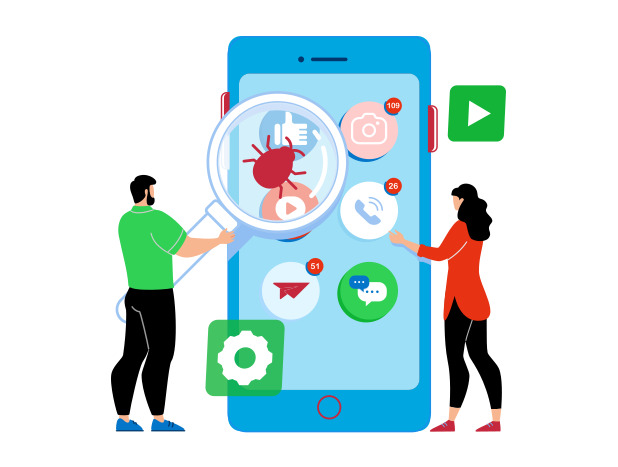
In MitM attacks, hackers intercept communication between the mobile app and backend servers to eavesdrop on sensitive data or manipulate transmitted information. This can occur over unsecured Wi-Fi networks or through compromised network infrastructure. By exploiting insecure communication protocols or SSL/TLS certificate validation issues, hackers can intercept and modify data traffic to their advantage.
3. Phishing Scams:
Phishing scams target users through deceptive emails, text messages, or social media posts, often impersonating trusted entities to lure victims into divulging sensitive information or installing malware-infected apps. Mobile app users may fall victim to phishing attacks by clicking on malicious links, entering credentials into fake login screens, or downloading fraudulent apps from unofficial sources.
4. Reverse Engineering:
Hackers employ reverse engineering techniques to decompile mobile apps and analyze their underlying code, structure, and functionality. By reverse engineering an app, attackers can uncover vulnerabilities, extract sensitive information, and develop exploits to compromise its security. This can lead to unauthorized access, data theft, or manipulation of app functionality.
5. Data Leakage:
Mobile apps may inadvertently leak sensitive user data due to poor security practices or misconfigured permissions. Hackers exploit such vulnerabilities to access and exfiltrate sensitive information, including personal details, financial data, and authentication credentials. Common sources of data leakage include insecure data storage, insufficient encryption, and improper handling of user input.
6. Denial-of-Service (DoS) Attacks:
Denial-of-Service attacks aim to disrupt the availability of mobile apps by overwhelming their servers or network infrastructure with excessive traffic or malicious requests. By flooding the app with requests, attackers can cause slowdowns, crashes, or complete service outages, resulting in a negative user experience and potential financial losses for the app's owner.
7. Unauthorized Access:
Weak authentication mechanisms or insufficient access controls can lead to unauthorized access to mobile apps and their backend systems. Hackers exploit such vulnerabilities to gain elevated privileges, manipulate app functionality, or extract sensitive data. This can result in identity theft, fraud, or compromise of confidential information.
8. Jailbreaking and Rooting Exploits:
Jailbreaking (iOS) and rooting (Android) exploits involve bypassing device restrictions to gain privileged access and control over the operating system. Hackers leverage jailbroken or rooted devices to install unauthorized apps, modify system settings, and evade security mechanisms implemented by app developers. This poses significant risks to app security and user privacy.
In summary, understanding the typical mobile app attacks is essential for implementing robust security measures and safeguarding against evolving threats. By addressing vulnerabilities, adopting secure coding practices, and educating users about potential risks, mobile app developers and security professionals can mitigate the impact of attacks and protect the integrity of mobile applications.
Current Mobile App Security Trend and Urgency
Discussing the current trends and urgency surrounding mobile app security is vital for staying ahead of evolving threats in the dynamic cybersecurity landscape. Here's an exploration of the latest trends and the pressing need for heightened security measures in mobile app development:
1. Rise in Mobile Usage:
With the proliferation of smartphones and mobile devices, there has been a significant increase in mobile app usage across various sectors, including finance, healthcare, and e-commerce. This surge in mobile adoption has made mobile apps lucrative targets for cybercriminals seeking to exploit vulnerabilities and access sensitive user data.
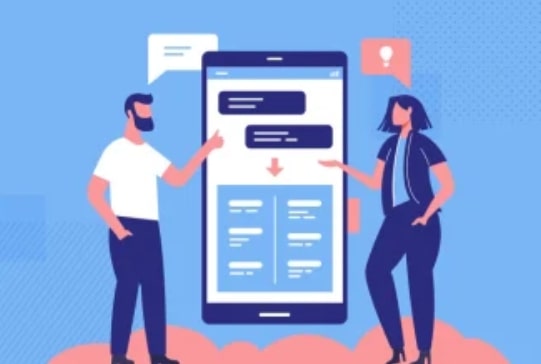
2. Sophisticated Cyber Attacks:
Cyber attacks targeting mobile apps are becoming increasingly sophisticated and diverse. Hackers employ advanced techniques, such as zero-day exploits, AI-driven attacks, and machine learning-based malware, to bypass security defenses and compromise mobile app security. These attacks are often difficult to detect and mitigate, posing significant challenges for app developers and security professionals.
3. Growing Threat Landscape:
The mobile app threat landscape is evolving rapidly, with new attack vectors and vulnerabilities emerging regularly. From malware infections and phishing scams to supply chain attacks and API vulnerabilities, mobile apps face a wide range of threats that require comprehensive security measures to mitigate effectively. The rapid pace of technological innovation and the interconnected nature of mobile ecosystems further exacerbate the security challenges faced by app developers.
4. Data Privacy Concerns:
Data privacy has become a paramount concern for mobile app users, regulators, and industry stakeholders alike. High-profile data breaches and incidents involving the unauthorized collection and misuse of personal information have heightened awareness about the importance of protecting user data. As regulatory frameworks, such as GDPR and CCPA, impose stricter requirements for data protection and privacy, mobile app developers must prioritize robust security measures to safeguard user privacy and maintain compliance.
5. Remote Work and BYOD:
The shift towards remote work and bring-your-own-device (BYOD) policies has expanded the attack surface for mobile apps. Employees accessing corporate data and applications from personal devices present new security challenges, as these devices may lack the same level of security controls and oversight as company-managed devices. Securing mobile apps against threats such as data leakage, unauthorized access, and malware infections is essential for protecting sensitive corporate information in a remote work environment.
6. Emphasis on Secure Development Practices:
There is a growing emphasis on integrating security into the mobile app development lifecycle from the outset. Secure coding practices, threat modeling, and regular security assessments are essential components of building secure mobile apps. By adopting a proactive approach to security and implementing robust security controls throughout the development process, organizations can mitigate the risk of security incidents and protect their mobile apps against cyber threats.
7. User Awareness and Education:
User awareness and education play a crucial role in enhancing mobile app security. Educating users about common threats, such as phishing scams, insecure Wi-Fi networks, and malicious app downloads, empowers them to make informed security decisions and safeguard their devices and data. Mobile app developers can also implement security features, such as two-factor authentication and security prompts, to help users mitigate security risks effectively.
In summary, the current trend in mobile app security underscores the urgency of implementing robust security measures to protect against evolving threats and safeguard user data. By staying abreast of emerging threats, prioritizing secure development practices, and fostering a culture of security awareness, organizations can enhance the security posture of their mobile apps and mitigate the risk of cyber attacks.
What Are Mobile VAPT Services?
Mobile Vulnerability Assessment and Penetration Testing (VAPT) services encompass a comprehensive suite of security assessments designed to identify and mitigate vulnerabilities in mobile applications. Here's an in-depth exploration of the key components and benefits of Mobile VAPT services:
1. Vulnerability Assessment (VA):
Static Analysis:
Static analysis involves examining the source code, binary files, and configuration settings of a mobile app to identify potential vulnerabilities without executing the application. This analysis helps detect issues such as hardcoded credentials, insecure data storage, and improper input validation.Dynamic Analysis:
Dynamic analysis involves executing the mobile app in a controlled environment to observe its behavior and identify runtime vulnerabilities. This may include analyzing network traffic, intercepting API calls, and assessing the app's response to various inputs. Dynamic analysis helps uncover vulnerabilities such as insecure communication, input validation flaws, and runtime errors.Manual Code Review:
In addition to automated analysis techniques, manual code review involves in-depth scrutiny of the mobile app's source code by security experts. This process helps identify complex vulnerabilities, logic flaws, and design weaknesses that may not be detected through automated means.
2. Penetration Testing (Pen Testing):
Black Box Testing:
Black box testing simulates an attacker's perspective by assessing the mobile app from an external, user-centric viewpoint. Penetration testers attempt to exploit vulnerabilities in the app without access to its internal workings or source code. This approach helps uncover security weaknesses that may be accessible to external attackers, such as authentication bypass, injection attacks, and insecure data transmission.White Box Testing:
White box testing, also known as clear box or glass box testing, involves assessing the mobile app from an internal perspective, with full access to its source code, architecture, and design documentation. Penetration testers leverage this detailed insight to identify vulnerabilities that may not be apparent from an external standpoint. White box testing helps uncover implementation flaws, insecure configurations, and architectural weaknesses that could compromise the security of the app.
3. Reporting and Remediation:
- Following the assessment phase, Mobile VAPT services provide comprehensive reports detailing identified vulnerabilities, their severity levels, and recommended remediation measures. These reports serve as a roadmap for addressing security issues and improving the overall security posture of the mobile app.
- Remediation efforts may involve patching security vulnerabilities, implementing secure coding practices, enhancing authentication mechanisms, and strengthening encryption protocols. Mobile VAPT providers may offer ongoing support and guidance to assist organizations in implementing remediation measures effectively.
4. Benefits of Mobile VAPT Services:
Enhanced Security:
Mobile VAPT services help organizations proactively identify and remediate security vulnerabilities before they can be exploited by attackers, thereby reducing the risk of data breaches, financial losses, and reputational damage.Compliance Assurance:
Mobile VAPT services help organizations achieve and maintain compliance with regulatory requirements and industry standards, such as GDPR, HIPAA, PCI DSS, and OWASP Mobile Top 10. GDPR Compliance For Mobile Apps is very much possible. Also is possible PCIDSS Compliance For Mobile Application.Risk Mitigation:
By addressing vulnerabilities identified through Mobile VAPT assessments, organizations can mitigate the risk of cyber attacks, data breaches, and service disruptions, thereby safeguarding sensitive information and maintaining business continuity.Trust and Confidence:
Demonstrating a commitment to security through Mobile VAPT services helps instill trust and confidence among users, customers, and stakeholders, fostering stronger relationships and enhancing brand reputation.
In summary, Mobile VAPT services play a critical role in assessing and enhancing the security posture of mobile applications, enabling organizations to identify and mitigate vulnerabilities effectively and safeguard against evolving cyber threats.
Difference: Android security and iOS security
Differentiating between Android and iOS security involves understanding the unique approaches and features employed by each platform to mitigate security risks. Here's a detailed comparison highlighting the key differences:
1. Operating System Architecture:
Android:
Android is an open-source operating system developed by Google. It is based on the Linux kernel and follows a more open architecture, allowing for greater customization and flexibility. However, the open nature of Android also introduces potential security risks, as users can download apps from third-party sources outside the official Google Play Store. Its good to know Android Security Risks

iOS:
iOS is a closed-source operating system developed by Apple exclusively for its devices, such as iPhones and iPads. It follows a more locked-down architecture, with strict control over app distribution through the Apple App Store. This closed ecosystem provides greater control over security, as Apple rigorously reviews and approves apps before they are made available to users.
2. App Distribution and Security Model:
Android:
Android employs a permissions-based security model, where apps request permissions to access certain device resources and user data. Users have the flexibility to grant or deny permissions during app installation or use. However, this model has been criticized for its potential to lead to overprivileged apps and user confusion regarding permissions.iOS:
iOS also utilizes a permissions-based security model, but with stricter controls and user transparency. Apps on iOS undergo thorough review and approval by Apple before being allowed on the App Store. Additionally, iOS implements sandboxing, which isolates apps from each other and the underlying operating system, reducing the impact of security breaches and malicious behavior.
3. Fragmentation and Update Process:
Android:
Android devices are manufactured by various vendors, leading to device fragmentation in terms of hardware capabilities, software versions, and update cycles. This fragmentation poses challenges for security updates, as device manufacturers and carriers are responsible for delivering updates to users. Consequently, many Android devices may be running outdated software with known security vulnerabilities.iOS:
iOS devices, on the other hand, are tightly controlled by Apple, resulting in less fragmentation and a more streamlined update process. Apple regularly releases security updates and patches for iOS devices, ensuring that users receive timely protection against known vulnerabilities. This centralized approach to updates contributes to iOS devices generally being more up-to-date and secure compared to their Android counterparts.
4. Security Features and Technologies:
Android:
Android incorporates various security features and technologies to protect user data and mitigate security risks. These include full-disk encryption, secure boot process, Google Play Protect for malware detection, and SafetyNet API for verifying device integrity and compatibility with secure apps.iOS:
iOS also offers robust security features, including hardware-based encryption, secure enclave for storing sensitive data (e.g., biometric information), app sandboxing, and runtime protection mechanisms such as Address Space Layout Randomization (ASLR) and Data Execution Prevention (DEP).
5. Third-Party App Ecosystem:
Android:
Android allows users to install apps from third-party sources outside the Google Play Store, which introduces additional security risks. While Google employs various security measures to detect and mitigate malicious apps, the open nature of the platform means users must exercise caution when downloading apps from unofficial sources.iOS:
iOS restricts app installation to the Apple App Store, where apps undergo rigorous review and approval processes. This closed ecosystem provides greater security and confidence in the integrity of apps, as users can trust that apps available on the App Store have been vetted by Apple for security and quality.
While both Android and iOS prioritize security, they employ different approaches and features to achieve this goal. Android offers greater customization and flexibility but may face challenges with fragmentation and update distribution. iOS, on the other hand, provides a more locked-down and controlled environment, resulting in a streamlined update process and a more secure app ecosystem. Ultimately, users should consider their specific security needs and preferences when choosing between Android and iOS devices.
Tools Used By Best VAPT Companies
The best Vulnerability Assessment and Penetration Testing (VAPT) companies employ a diverse range of tools and technologies to conduct thorough assessments and identify security vulnerabilities in systems, networks, and applications. Here are some of the key tools commonly used by top VAPT companies:
1. Automated Scanning Tools:
Nessus:
Nessus is a widely used vulnerability scanner that helps identify vulnerabilities, misconfigurations, and security weaknesses in networks and web applications. It offers comprehensive vulnerability detection capabilities and supports automated scanning of large-scale environments.OpenVAS:
OpenVAS (Open Vulnerability Assessment System) is an open-source vulnerability scanner that provides a suite of tools for detecting and managing security vulnerabilities. It offers a wide range of vulnerability tests and supports automated scanning of networks, hosts, and web applications.
2. Web Application Security Testing Tools:
Burp Suite:
Burp Suite is a powerful web application security testing tool used for manual and automated testing of web applications. It includes features such as web vulnerability scanning, crawling, and exploitation, as well as comprehensive reporting capabilities.OWASP ZAP:
OWASP ZAP (Zed Attack Proxy) is a free and open-source web application security testing tool designed to help identify security vulnerabilities in web applications. It offers features such as automated scanning, passive and active scanning modes, and scripting capabilities for customizing tests.
3. Network Security Tools:
Nmap:
Nmap is a versatile network scanning tool used for discovering hosts and services on a network, as well as identifying open ports, operating systems, and potential vulnerabilities. It supports various scanning techniques and provides detailed reports on network topology and security posture.Metasploit:
Metasploit is a penetration testing framework that facilitates the discovery and exploitation of vulnerabilities in networks and systems. It includes a wide range of exploit modules, payloads, and auxiliary tools for testing and validating security controls.
4. Wireless Security Tools:
Aircrack-ng:
Aircrack-ng is a suite of wireless network security tools used for assessing the security of Wi-Fi networks. It includes tools for capturing and analyzing network traffic, cracking WEP and WPA/WPA2 encryption keys, and conducting packet injection attacks.Kismet:
Kismet is a wireless network detector, sniffer, and intrusion detection system used for monitoring and analyzing Wi-Fi networks. It provides real-time visualization of network activity, including nearby access points, clients, and potential security threats.
5. Exploitation Frameworks:
ExploitDB:
ExploitDB is a comprehensive database of exploits and vulnerabilities maintained by Offensive Security. It provides a repository of exploit code, proof-of-concept exploits, and security advisories for testing and validating security controls.Canvas:
Canvas is an exploitation framework developed by Immunity Inc. It includes a collection of exploit modules and payloads for targeting various operating systems and applications, as well as a user-friendly interface for conducting penetration tests.
6. Reporting and Documentation Tools:
Metasploit Pro:
Metasploit Pro includes advanced reporting and documentation features for generating comprehensive penetration testing reports. It offers customizable report templates, executive summaries, and vulnerability prioritization to help organizations understand and address security risks effectively.Dradis
Framework: Dradis Framework is a collaboration and reporting platform used for organizing and documenting penetration testing findings. It provides templates for creating professional-looking reports, as well as integration with popular vulnerability scanners and issue trackers.
These are just a few examples of the tools commonly used by top VAPT companies to conduct thorough security assessments and identify vulnerabilities across various systems, networks, and applications. Effective VAPT requires a combination of automated scanning tools, manual testing techniques, and expertise in security analysis to deliver actionable insights and recommendations for mitigating security risks.


